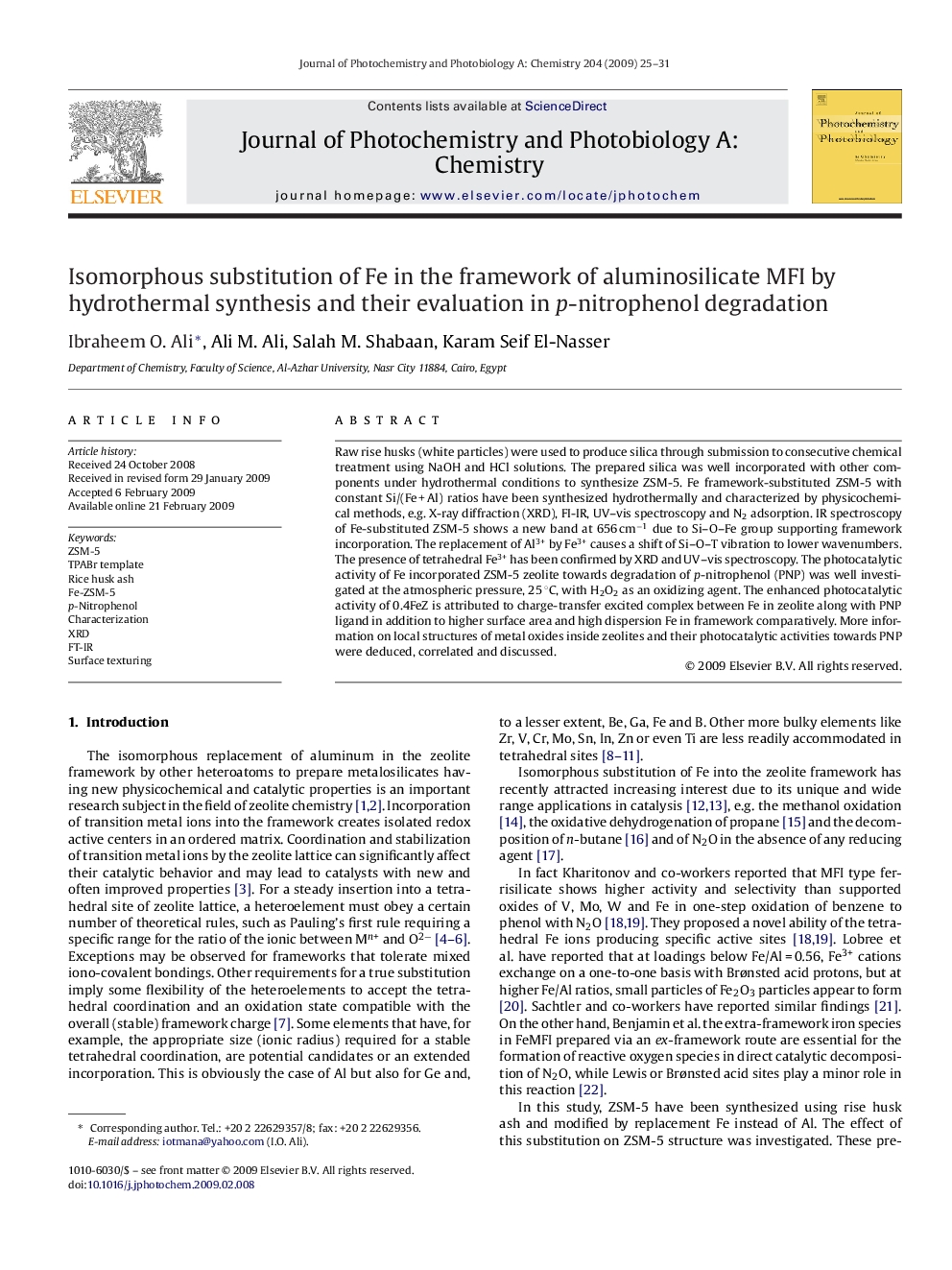| کد مقاله | کد نشریه | سال انتشار | مقاله انگلیسی | نسخه تمام متن |
|---|---|---|---|---|
| 27967 | 44053 | 2009 | 7 صفحه PDF | دانلود رایگان |

Raw rise husks (white particles) were used to produce silica through submission to consecutive chemical treatment using NaOH and HCl solutions. The prepared silica was well incorporated with other components under hydrothermal conditions to synthesize ZSM-5. Fe framework-substituted ZSM-5 with constant Si/(Fe + Al) ratios have been synthesized hydrothermally and characterized by physicochemical methods, e.g. X-ray diffraction (XRD), FI-IR, UV–vis spectroscopy and N2 adsorption. IR spectroscopy of Fe-substituted ZSM-5 shows a new band at 656 cm−1 due to Si–O–Fe group supporting framework incorporation. The replacement of Al3+ by Fe3+ causes a shift of Si–O–T vibration to lower wavenumbers. The presence of tetrahedral Fe3+ has been confirmed by XRD and UV–vis spectroscopy. The photocatalytic activity of Fe incorporated ZSM-5 zeolite towards degradation of p-nitrophenol (PNP) was well investigated at the atmospheric pressure, 25 °C, with H2O2 as an oxidizing agent. The enhanced photocatalytic activity of 0.4FeZ is attributed to charge-transfer excited complex between Fe in zeolite along with PNP ligand in addition to higher surface area and high dispersion Fe in framework comparatively. More information on local structures of metal oxides inside zeolites and their photocatalytic activities towards PNP were deduced, correlated and discussed.
Journal: Journal of Photochemistry and Photobiology A: Chemistry - Volume 204, Issue 1, 30 April 2009, Pages 25–31